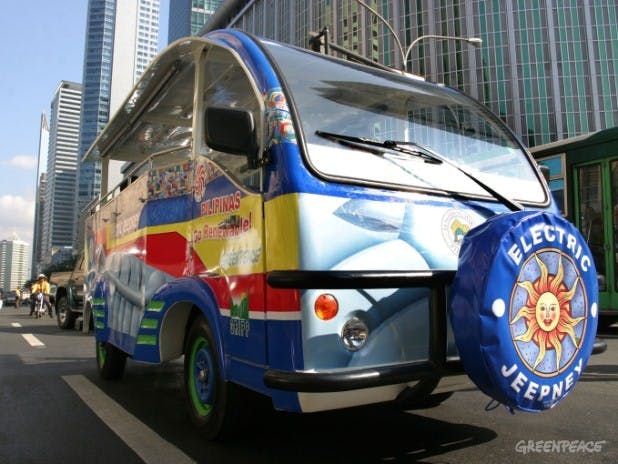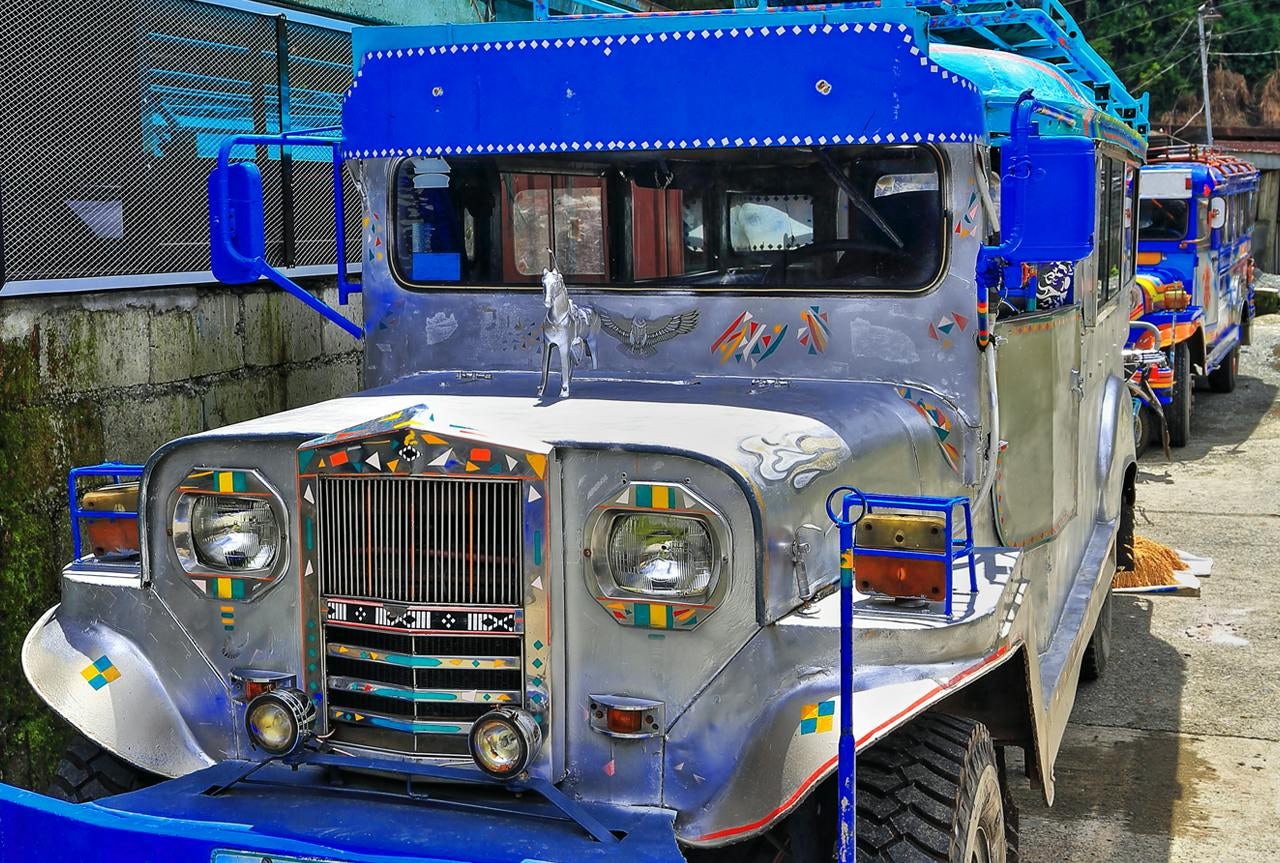It may look like a stoned escapee from 1970s San Francisco or a traveling carnival. But in the Philippines, home of some 120 million people, it’s a critically important means of local transportation. Unfortunately, it is also a major source of pollution. Currently, there are some 220,000 jeepneys operating nationwide, and now the first clean and quiet e-jeepneys can be seen on Manila’s notoriously chaotic traffic scene. The final proof that electrification is global.
Iconic design
When the American troops left this exotic island nation after World War II, a large number of army jeeps were sold or simply given away to friendly locals. Who promptly started to convert them into small, semi-open minibusses. They were badly needed, as most of the public transportation system had been destroyed during the two world wars.
From the very beginning, jeepneys were typically painted in unbelievably flamboyant colors, also featuring bright lights and ornaments, often with pop cultural and religious motives.
Jeepneys got air conditioning and several other updated features. Since then, the vehicles have been modernized, one step at a time, without abandoning the iconic design and color schemes. The third generation got better air conditioning systems, newly assembled engines, and closely resemble minibusses.
But there is no way around it: the majority of the fleet is still recognized as a noisy, garish, smelly, and polluting necessity. Today a 16-passenger jeepney uses the same amount of fuel as a 54-passenger bus. But with rising gas prices they have become increasingly uneconomical, not to mention environmentally challenging.
Co-funded by Greenpeace
So, here comes the E-Jeepney, a project largely funded by Green Peace International and Green Independent Power Producers, GRIPP. An E-Jeepney can run for 120 to 140 kilometers on a single charge, at an average speed of 40 kilometers per hour. It is said to be the first public transportation system of its kind in south-east Asia.
E-Jeepney developers have tightened control on graphic design and paint jobs to ensure that the artwork applied will continue to represent the lives of the average Filipino. National symbols and imagery are applied to make sure that the new technology is welcomed and appreciated by the people it serves.

